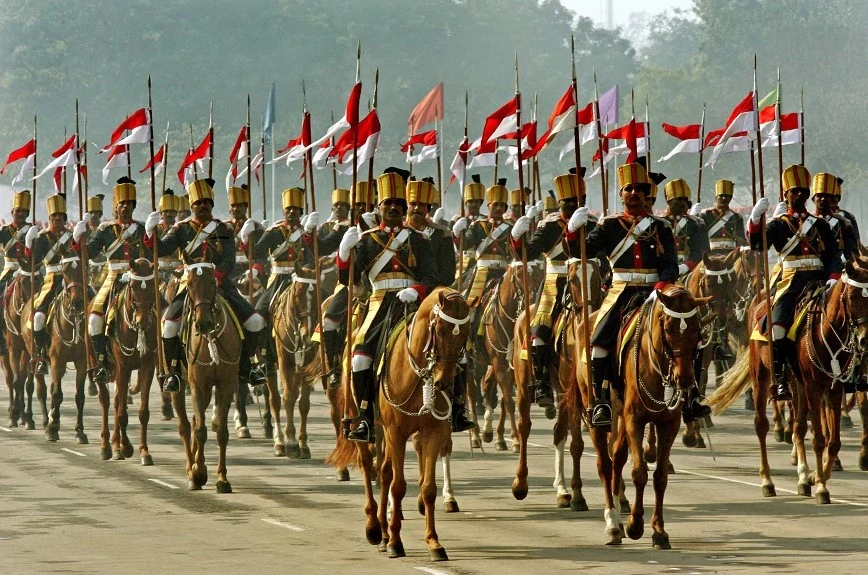
61st Cavalry At Kartvya Path
The 61st Cavalry Regiment is a horse-mounted cavalry unit of the Indian Army. It is notable for being one of the largest, and also one of the last, operational unmechanised horse-mounted cavalry units in the world.
Formerly deployed into active conflict, the 61st Cavalry is currently employed on ceremonial occasions, though it can be deployed for internal security or police purposes if required.
On Republic Day each year the Cavalry and the President’s Bodyguard parade in full dress uniform in New Delhi, in what is probably the largest assemblage of traditional cavalry still to be seen in the world. The regiment is presently based in Jaipur.
61st Cavalry, the only serving active Horsed Cavalry Regiment in the world, at Kartavya Path on #RepublicDay
Their motto is ‘Ashva Shakti Yashobal’ pic.twitter.com/l8E5jHRrXH
— ANI (@ANI) January 26, 2023
Also read: India decorates for the 74th Republic Day in tricolour
The 61st Cavalry has 39 battle honours
Passed on from its predecessors, including “China, 1900”, “Cambrai, 1917”, “Waziristan, 1917”, “France and Flanders 1914-1918”, “Suez Canal – Egypt, 1917-1918”, “Gaza”, “Megiddo”, “Sharon”, “Damascus and Palestine, 1917-1918”, “Afghanistan, 1919”, and “Haifa-Aleppo, 1919” the Cavalry has 39 battle honours.
The 61st Cavalry was sent to protect the approaches to Ganganagar in 1965’s Indo-Pakistani War as a member of the 67th Infantry Brigade, led by Brigadier Bant Singh and then-Commandant Lieutenant Colonel Thakur Govind Singh. The assigned territory covered about 100 kilometres of semi-arid terrain. The 61st Cavalry conducted frequent night patrols on horseback while armed police detachments guarded border checkpoints to signify sovereignty. There were no reports of hostile infiltration or penetration.
In 1970, Lieutenant General Mohinder Singh Wadalia, the regiment’s long-standing colonel, retired.
In a strategic move, it was decided to invite the then-Army Chief, General Sam Manekshaw, to be the next colonel of the 61st Cavalry. Manekshaw realised that it needed a change in role, otherwise, the military and civilian bureaucracy would mechanise it.
In the prelude to the Indo-Pakistani War of 1971, Manekshaw moved the regiment to Delhi to guard the Rashtrapati Bhawan, ensure the internal defence of Delhi, and conduct dismounted ceremonials. The 61st Cavalry presented the first guard of honour to Sheikh Mujibur Rahman on his release from a Pakistani prison in January 1972.

















